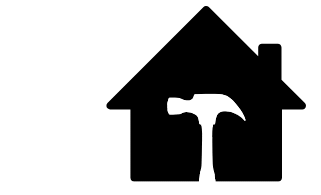If you’re thinking about different ways of heating your home, you might want to consider infrared panels. Ok, so they’re not like conventional radiators, but that’s no reason to dismiss them. In fact, you could even save some money with this modern way of heating.
Rather than heating space, infrared panels instead warm objects directly. So in this case, that’s you. You may well already be benefitting from infrared heating elsewhere in the home, such as a patio heater or electric fire.
These infrared heating panels can be wall- or ceiling-mounted and even built into furniture. You won’t have to wait for a room to be heated, as you’ll be warmed directly. Adversely, when the heater is turned off, you’ll become colder quicker.
When positioning a heater, make sure it’s not blocked by any furniture. Homeowners actually find them less stuffy than normal central heating and choose infrared heating for its comfort and health reasons.
Do infrared panel heaters save energy?
The panels are run by electricity, although if you look hard enough, you’ll find some oil and gas-fired heaters too. If you’re using NationalGridd ga, then you’ll probably find it more expensive to run, and gas is cheaper than electricity. However, if you’re on oil or electric heating, they’re certainly worth considering.
Annette Witheridge, co-owner of the Salty Monk restaurant and BB&B, has recently installed infrared heating and says, “Compared to the gas heating in the main building, the infrared heating in the fitness room is very efficient and low cost. It takes up little or no space, and it gives off a nice feeling of heat. It’s like standing in the sun. There’s no hot dry air.”
How much do infrared panel heaters cost?
Typically, you can expect to pay more for infrared heat than for normal electric heaters. There are plenty of styles and designs available, though, so you may well be able to pick up a bargain. Generally, you should look at spending between £150 and £500 for an infrared heater. Any more than this and it’s really worth looking elsewhere.
One company sells a 250-watt panel (30x90cm, 2.5cm deep and 3.5kg) for £160, and an 800-watt panel (60 cm x 120cm, 2.5 cm deep and 12.5kg) for £420.
Radiant heating is also eligible for non-domestic Green Deal finance.
Conclusion
Infrared heating offers a fresh approach to keeping your home warm, focusing on heating people and objects directly rather than the air around them. While it may cost more upfront than standard heaters, the comfort, health benefits, and sleek design make it an appealing option for many households. As with any heating system, it’s important to weigh up your current energy source and usage to decide whether it’s the right fit for you. For those on electric or oil heating, infrared panels can provide an efficient and modern alternative that combines style with performance.
FAQs
1. How does infrared heating differ from traditional radiators?
Unlike radiators that heat the air in a room, infrared panels warm people and objects directly, giving a feeling similar to natural sunlight.
2. Are infrared heaters expensive to run?
It depends on your energy source. If you use gas central heating, it may be cheaper to stick with that. But for homes on electricity or oil, infrared can be more cost-efficient.
3. Where can infrared panels be installed?
They can be mounted on walls, ceilings, or even integrated into furniture. Just make sure they aren’t blocked by furniture for the best results.
4. Do infrared heaters provide instant warmth?
Yes. Unlike central heating, there’s no waiting for the air to warm up — you feel the heat directly as soon as the panel is on.




